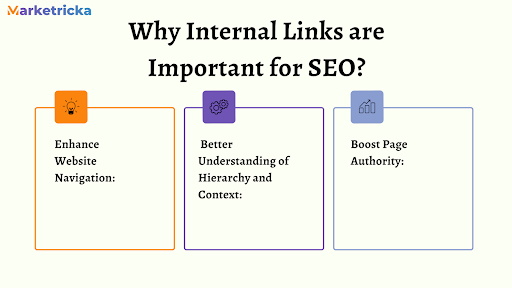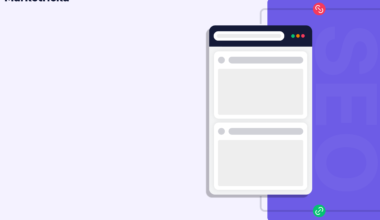Summary:
A powerful SEO strategy contains an implementation of all crucial elements, including Internal Links. Internal linking helps SEO to achieve success. In this blog, we will cover all aspects of internal linking, including how it helps SEO, what is the right process, and structure, and will answer many other questions. Let’s start.
Every time we go through any article, blog, or page in the online world, we will find internal links. Therefore, we can state that internal links are available on every page.
Just go to any browser:

Write any random word:

Click on any of the pages:

We clicked on the second page:

The red-marked content is internally linked content.
Now you are able to find out internal links on any page, so let’s gain a clear understanding of internal links.
What are Internal Links?
Internal links are the process of providing hyperlinks to specific text that redirects users to another page within the same website.
This practice helps users navigate to relevant pages that may be useful to them, as the text and added links are interconnected.
While external links are a completely different concept that points to the pages from another website.
For example, you have a clothes website where the home page is the primary link to a landing page where is a menu such as type of clothes, for, about us, and other internal linking pages.
This kind of structure is crucial from the perspective of SEO and leads toward the result in page ranking and increases the website domain authority.
How Internal Links Look on the Front End:

How Internal Links Look on the Back End:
<a href=”https://www.example-site.com/“>enforcing</a>
The text or content on which we add a link is known as anchor text.
Key Benefits of Internal Linking and Reasons Why Internal Links Are Important for SEO
If you are looking forward to optimizing content as per the SEO aspect then considering internal links are an ideal step. However, before that, you need to understand the basic importance of internal linking to serve an SEO perspective.
Here are the top 3 benefits of adding internal links to your pages:

Enhance Website Navigation:
Relevant links within the content help users to navigate through website pages more effectively. Also, allow the user to thoroughly visit the website.
Users can easily discover and access the information provided on the website that might be they looking for. Ultimately, this improves the user experience, reduces the bounce rate, and encourages users to explore more about the website.
Enable Search Engines to Get a Better Understanding of Hierarchy and Context:
With the proper internal linking, you can enable search engines to understand the website structure hierarchy of a website’s content.
Using the anchor text that accurately describes the links available on the website is determine the content as well as page relevance. Through this, search engines are capable of doing indexing and ranking process.
As a result, it boosts website visibility on search engines for relevant queries.
In one of the guides, Google mentioned how internal linking works, “Google discovers some web pages by crawling them directly, while it finds other pages when it follows links from pages it already knows.”
Boost Page Authority:
Through internal linking, you can enhance the website’s authority more easily. By clicking on a particular anchor text, it redirects to another page, which means it passes the authority.
The Google page-ranking algorithm works under the concept of the importance of webpages.
Let’s get a clear understanding through an example: There is page A a well-established and authoritative website, that has received numerous high-quality external links from reputable sources. This indicates that Page A holds significant authority. Consequently, if Page B, a newly published page, utilizes an internal link from Page A, it can inherit and benefit from the authority of Page A.
Concluding lines on Internal Linking in SEO
To check the internal linking process several tools are available nowadays. By embracing these latest tools you can add benefits and strengthen your SEO strategy.
Implement internal linking strategies and check them on a daily basis to resolve critical issues. It’s better to perform regular site audits and review the internal linking reports.
Consistent site audits help you to bring go health and improvement to the website and make informed decisions for better outcomes.







5 comments
Comments are closed.